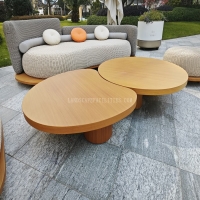Welcome to the website for landscape facilities products and knowledge.
What are the most common manufacturing defects in landscape chairs, and how are they prevented?
Landscape chairs are essential for outdoor spaces, but manufacturing defects can compromise their durability and aesthetics. Common issues include weak welds, poor material quality, uneven finishes, structural instability, and corrosion.
Weak welds often occur due to improper techniques or low-grade materials. To prevent this, manufacturers should use high-quality welding rods and trained professionals. Poor material quality, such as substandard metals or plastics, leads to premature wear. Opting for weather-resistant materials like powder-coated aluminum or UV-stabilized polypropylene ensures longevity.
Uneven finishes, like chipped paint or rough surfaces, result from inadequate preparation or rushed processes. Implementing thorough sanding and multiple coating layers can enhance appearance and protection. Structural instability, such as wobbly legs, stems from design flaws or assembly errors. Rigorous stress testing and precise measurements during production are key solutions.
Corrosion is a major concern, especially in metal chairs. Galvanization or stainless steel construction can mitigate rust. Regular inspections and quality control checks at each production stage further minimize defects.
By addressing these issues proactively, manufacturers can deliver durable, high-quality landscape chairs that withstand outdoor conditions and customer expectations.
Related search:

Recommendation
Elliptical metal outdoor table with nested design, resembling wood grain, round table